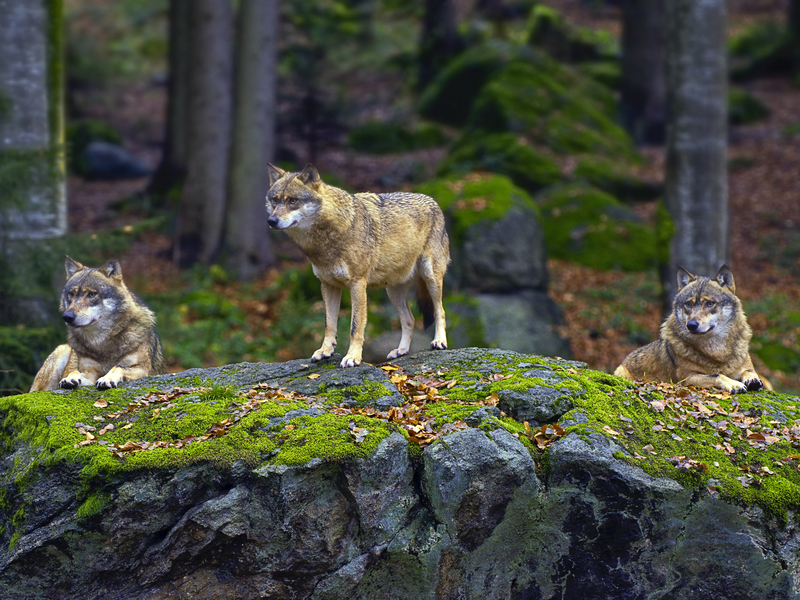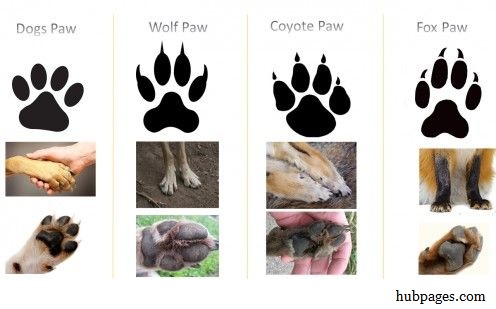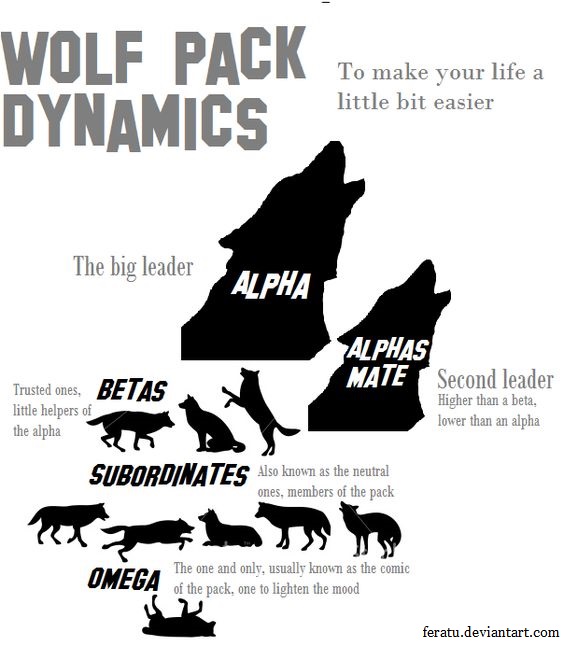As with other dangerous wildlife, we often have to fight our natural instincts to run and flee. It’s even more important to learn how to detect when wolves are around so we can try to avoid them or stay alert when there’s a possibility that we'll cross paths with them.
1 – How to Tell When Wolves are Around
Since wolves tend to be afraid of people, they might hide themselves as soon as they sense your presence, so you might not see them immediately.
Keep an eye out for their tracks. Wolves usually have bigger feet the coyotes and most dogs. They also walk so that all four paws make a fairly straight line, while dogs tend to waver.
Wolf kill sites are also fairly easy to spot. Their prey will be ripped apart, and picked fairly clean. Even if the wolves did not eat the prey for some reason, there is a chance they will come back to the site, even months later. If you see a wolf kill, proceed with caution, and always be careful in this area.
Unlike many other animals, wolves usually won’t try to chase crows out of their territory. If you see crows circling, there is a chance they are at the site of a wolf kill, and are waiting for their chance to feast.
2 – It Spells Danger
Sadly, rabies epidemics are reaching greater proportions among wolves every year. As with dogs, cats, and other mammals, wolves are highly susceptible to this disease.
Since a wolf pack’s territory can reach over 600 miles, even a single wolf has the potential to reach out and spread this disease to many other animals. Typically, a rabid wolf will either leave the pack or be driven from it.
3 – What Each Animals Position in the Pack Means
A wolf pack can have between 8 and 15 members, and most wolves fall somewhere between the alphas and the omega and are referred to as beta.
In most cases, wolves achieve alpha status, however, though personality and communication.
4 – How to Escape if Wolves Approach You
Generally, there are two basic kinds of wild animal attacks:
There are attacks that occur because the animal is frightened or seeks to protect its young. In these cases, you are usually best served by making yourself as small as quiet as possible so that the animal will leave you alone.
The other kind of animal attack that occurs revolves around animals that clearly want you out of their territory because they consider themselves superior or dominant. Wolves fall into this category.
When you have wolves approaching, it may be very tempting to try and run away. Remember that wolves run faster than you. Once you turn your back on them, they will charge on you all the faster.
The very act of fleeing triggers, in dogs and wolves, predatory instincts even if what they are pursuing is actually bigger and stronger than them.
Instead of running away, the best thing you can do is make yourself seem as big and threatening as possible. You can yell, jump up and down, throw things, and make other loud noises.
Even if the wolves begin to move off, never turn your back on them. Just keep moving backwards slowly and at a steady pace.
One of the most important things you can do in an encounter with wolves is make sure that you keep eye contact with them without staring.
Avoid allowing the wolves to circle behind you.
STAY CALM. Wolves have an incredible sense of smell, and can literally smell fear.
To escape the wolves completely, you will need to back up until you find a useful way to get a way from the wolves – climbing a tree, getting into a vehicle, or getting into some other shelter that the wolves cannot get into.
If the pack is hungry, or want to eat you later on, they may stay around for a good while, or try to get at you. Unless you completely leave the area, count yourself still in danger.
Among other things, you can try building a fire. You should also know how to make spears, throwing knives, and other weapons that can be used to kill or injure the wolves.
5 – When a Wolf Attacks
As with dogs and other related animals, a wolf will seek to knock you down and bite. Nevertheless, here are some things to do for your salvation:
Always remember to carry a heavy stick, rocks, or other weapons with you.
If you do not have a weapon, back up against a tree or anything else that will protect your back. Jump up onto a large boulder to give yourself a height advantage.
Keep yelling, kicking, grabbing, and biting if you are able. As with any other animal, a wolf’s throat and eyes are vulnerable to attack. You may also be able to use its body to shield you from the other animals.
6 – Other Things to Avoid
Avoid feeding wolves or encouraging them to be around humans.
This includes endangering the wolves themselves because once people learn an attack has occurred, there will be a move to hunt down and slaughter the entire pack.
Remember, the wolves did not ask for your presence, and if you or others encourage them, they will do as their nature dictates.
For the most part, you will find that wolves are truly beautiful and intelligent creatures as long as you understand their role and yours in nature.
Have you come in contact with wolves while out in the wilderness?
Article Source: Survivopedia



When they come you ran the front legs and split them apart. Boom done. That is assuming you are in the wildwithout a firearm which where I am from is very foolish
Rachelle Junkin (Ashel)
The pieces of cloth in wolf$#%&!@*is from the people that go in the woods without protection.